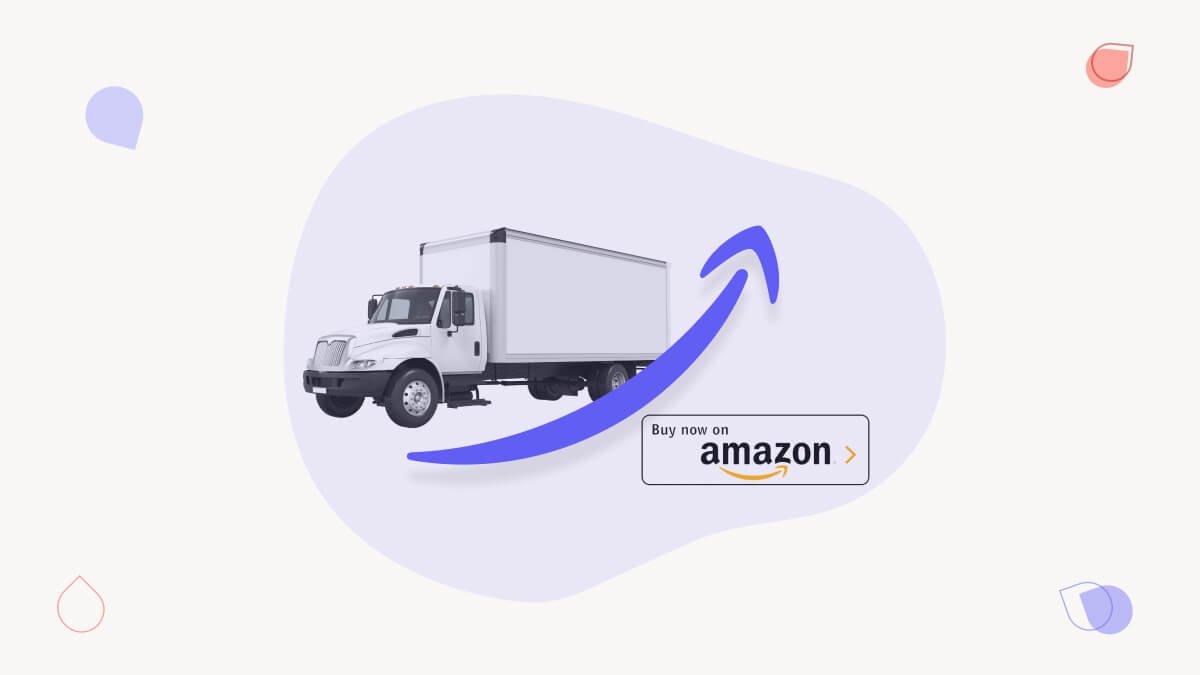Amazon Vendor vs. Seller: the Difference + Pros & Cons for 2026
What's the difference between being an Amazon seller and an Amazon vendor? We break it all down including the pros and cons, fees, tools, and much more.
Updated November 7, 2024

Are you in the B2C space itching to tap into a new customer base? Thinking of launching an Amazon store? There’s a lot to consider as you start your new venture into the world’s largest marketplace.
Whether you’re just starting out or have an established business, selling on Amazon can be the next step to unlocking a profitable new revenue stream for your eCommerce company.
But wait… what’s the difference between being an Amazon seller or an Amazon vendor? If you’re just getting started and already feeling confused, you’re not alone.
We’ll walk you through the pros & cons of each relationship with Amazon so you can pick the best (and most relevant) one for you to start your Amazon store, including what access to Vendor Central and Seller Central can do for your business.
Amazon sellers vs Amazon vendors
The biggest difference between an Amazon vendor and an Amazon seller is the relationship they have with Amazon. An Amazon vendor is a manufacturer or distributor that sells products to Amazon at a wholesale price.
On the other hand, an Amazon seller is an individual or business that sells products directly to customers through the Amazon marketplace. Each of these is an exciting option for your business that provides powerful tools for expanding your sales channels.
The pros of being an Amazon vendor
Do you have a high production capacity and supply chain efficiency? Do you have the ability to sell your products at a wholesale price? If “yes,” then Amazon's Vendor Model could be the perfect setup for you. Here are the pros of being an Amazon vendor.
Sold by Amazon displayed on your listing
Having this on your listing means that Amazon has purchased your product and is reselling it to their customers under their own brand umbrella.
For customers, this badge signifies added trust and confidence as the purchase is covered by Amazon’s customer service and return policies. It also means fast and reliable shipping, and the ability to bundle with other Amazon products.
This makes the purchase eligible for Amazon Prime which gets priority placement in Amazon’s search results.
products with this badge historically convert at a higher rate than merchant-fulfilled listings. The conversion rates on these products alone are enough to consider the Vendor Model.
Access to marketing tools
Amazon Marketing can benefit both Amazon vendors and sellers, but there are certain advantages of being a vendor - you get access to more marketing tools to help grow your business. Here are some perks of being a vendor:
Access to Amazon Marketing Services (AMS)
AMS is a suite of advertising tools that is only available to vendors. Amazon Marketing Services allows vendors to create sponsored product ads, display ads, and video ads, which can drive visibility and sales for their products on Amazon.
Amazon Advertising
Amazon ads help brands and sellers promote their products and reach customers on Amazon's website, mobile app, and other properties. The platform offers a range of advertising options, including display ads, video ads, sponsored products, and sponsored brands.
Looking for an expert to improve your ads campaigns? Hire one of our top notch Amazon PPC experts.
A+ Content
A+ Content is enhanced product content that appears below the product description and can include images, videos, and comparison charts. A+ Content is only available to vendors and can help to differentiate their products from competitors and increase conversion rates.
Amazon Retail Analytics (ARA)
ARA is a reporting tool that provides vendors with detailed insights into their product performance, including sales, conversion rates, and customer behavior. ARA can help vendors to make data-driven decisions and optimize their product listings for better performance.
Vendor Central
Amazon Vendor Central is a web-based portal that vendors use to manage their product listings, inventory, and orders. Vendor Central provides vendors with additional tools and resources, such as the ability to create deals and promotions and access to training and support resources.
Simplified business model
While you may have an increased workload upfront to get your product in bulk to FBA (Fulfillment by Amazon), once you are set up, Amazon does everything for you from their Amazon Fulfillment Centers, essentially giving you a “set and forget” revenue stream for your business. Sounds pretty great, right?
You can use Amazon's Vendor Central to manage your business entirely through Amazon by creating purchase orders and tracking payments and invoices. Another advantage to the Vendor Program is being able to offload customer service issues to Amazon rather than having to staff a customer service team on your own.
Need a hand? Talk to one of our expert Amazon FBA specialists.
Better payment terms
Vendors often receive more favorable payment terms, such as longer payment cycles and the option to receive early payments in exchange for a discount. Amazon does its best to provide favorable logistical options to vendors and help improve fulfillment.
The cons of being an Amazon vendor
Overall, becoming an Amazon vendor can have advantages. However, it's important to consider the potential impact on your profit margins, in addition to the other requirements and restrictions that come with being a vendor, before making that decision to switch.
Lower margins
Becoming an Amazon vendor can lower your product margins and take-home profit in several ways. Here are a few to consider:
Wholesale pricing
As an Amazon vendor, you would be selling your products wholesale to Amazon at a discounted price, which can reduce your profit margin compared to selling directly to customers. Amazon usually negotiates aggressively on price with vendors, as it seeks to maintain its competitive advantage and have price control to keep prices low for customers.
Shipping and handling fees
When selling products to Amazon as a vendor, you may be responsible for paying shipping and handling fees to get your products to Amazon's warehouses. These fees can add up and reduce your profit margins quite a bit.
Amazon fees
Amazon's vendor model charges fees for various services, such as distribution, marketing, and customer service. These vendor fees can vary depending on the category of your product and can significantly add to your normal fulfillment costs.
Volume requirements
Amazon may require you to meet certain volume requirements to maintain your status as a vendor. This can put pressure on your production and supply chain, potentially leading to higher costs and lower margins.
Return policies
Amazon has the right to return unsold products to you, which can result in additional costs and reduce your profit margin. They may be less stringent and process more returns in order to satisfy customers so be aware of that.
Less control over your brand
Are you a stickler for telling your brand story or have stringent brand guidelines? We hate to break it to you, but being an Amazon vendor means you are giving up control over your brand presentation to the customer.
Using FBA means less work for you, it also means less control over your brand as Amazon handles messaging and returns and even controls the pricing. You could end up competing with yourself between your website and Amazon. Imagine this: your Amazon products appear next to your products in the same Google Shopping feed SERPs.
More rigid logistical requirements
Less control also comes with more stringent guidelines and requirements, including pricing and inventory management. Vendors who do not meet these criteria may face penalties.
A few requirements you may face as an Amazon vendor include:
- EDI (Electronic Data Interchange) compliance - Vendors must be EDI compliant to sell to Amazon in order to electronically exchange business documents like purchase orders and invoices.
- Inventory management - Vendors are responsible for managing their inventory levels to ensure there is enough stock to meet demand while avoiding overstocking and excess inventory.
Meeting the requirements can be complex and time-consuming, which is why many companies consider hiring Amazon agencies to help manage the process from end to end. The management aspect is made easier through the use of Amazon's Vendor Central.
The pros of being an Amazon seller
Becoming an Amazon Seller can be a game-changer for your business. If you’re eager to join the ranks of successful stores, keep reading to learn more about the benefits and challenges of this Amazon relationship - including coveted access to Amazon Seller Central.
More control of your listings
Amazon's seller model gives you more control over pricing, product information, and customer interaction than for Amazon Vendors. Have a brand you aren’t wanting to part with? Being a seller may be a better option for you than being an Amazon vendor.
Using Amazon's Seller Central, you can create product listings, manage inventory, fulfill orders, track performance, and communicate with customers directly as your own brand.
Another benefit to having more autonomy over your listings is pricing control. Sellers can determine the best price for their products based on their product margins & other COGs factored in.
Lower fees
As an Amazon seller, you'll generally pay lower fees than Amazon vendors, which can result in higher profit margins. Amazon seller fees are generally lower than vendor fees because as a seller, you are responsible for managing your own inventory and handling your own logistics. This means that Amazon incurs fewer costs in terms of storage, fulfillment, and shipping
Flexibility
Being an Amazon seller has less guidelines and gives you more flexibility and control over your business. You can choose which products you want to sell, set your own prices, and manage your own inventory in Seller Central. You also have the option to use Amazon's Fulfilled by Amazon (FBA) service, which allows you to outsource the logistical aspects of your business to Amazon.
No volume requirements
There are no volume requirements, which allows for greater flexibility in managing inventory and production. Have a made-to-order business? This could be a great opportunity for you to expand your horizons.
More branding opportunities
Amazon Sellers have more branding opportunities including the ability to create and manage their own Amazon storefront and run their own advertising campaigns.
Overall, being an Amazon Seller can offer more control, flexibility, and branding opportunities, as well as lower fees. However, it does require more hands-on logistics and customer service, which can be a challenge for some brands.
Thankfully, Amazon Seller Central allows you to organize all this information in one simple place.
The cons of being an Amazon seller
It’s not all rosy and there are a few downsides to consider before becoming an Amazon seller.
Competition
Amazon is a highly competitive marketplace, and it can be difficult to stand out among the millions of other sellers. Thankfully Amazon's Seller Central gives you an advantage by helping you to identify product trends in emerging categories so you can continue to grow your business.
High fees
Although Amazon seller fees are generally lower than Amazon vendor fees, they can still add up, especially if you use Amazon's FBA program or advertising services.
Although there is no subscription fee for Seller Central, sellers are charged a per-item fee for each item sold. Professional sellers pay a monthly fee for Amazon's subscription service.
Inventory management
As an Amazon Seller, you are responsible for managing your own inventory and ensuring that you have enough stock to meet demand, without overstocking or running out of stock.
Customer service
Amazon places a high emphasis on customer service and positive reviews, and as a Seller, you will be responsible for handling customer inquiries, returns, and complaints.
Buyer complaints can eat up a chunk of your time as a business owner. With the increased volume of exposure on Amazon, you may need to budget time appropriately to handle increased customer service.
If you don't pay close attention to your customer service complaints, your positive reviews could decline and could negatively impact your sales. Remember - you need to maintain a high level of 5-star reviews to remain a seller.
Policy changes
Amazon's policies and guidelines can change frequently, and it can be challenging to stay up-to-date and compliant.
Counterfeits and fake reviews
Amazon has had some issues with counterfeit products and fake reviews, which can damage the reputation of legitimate sellers.
The bottom line
To put it simply, both Amazon vendors and sellers have their own unique benefits and drawbacks. The decision of which to choose depends on your goals, resources, and priorities.
Amazon vendors have the advantage of a direct relationship with Amazon and greater marketing opportunities, but lower profit margins and higher logistical requirements. Amazon sellers, on the other hand, have more control over their business and higher profit margins, but must handle more logistics and customer service on their own.
Ultimately, businesses should carefully weigh the pros and cons of each option and determine which best aligns with their business goals and capabilities. Still have questions? Talk to one of our Amazon experts.
FAQs
What is the difference between Amazon seller and vendor central?
The fundamental difference is that Amazon Seller Central is designed for third-party sellers who want to list and sell their own products on the Amazon marketplace. Amazon Vendor Central is designed for direct manufacturers and distributors who sell products directly to Amazon at a wholesale price.
Can you be a vendor and seller on Amazon?
Yes, it is possible for a business to be both an Amazon vendor and an Amazon seller. Some businesses use both Vendor Central and Seller Central to maximize their sales and reach on Amazon. As a seller, you will have access to Seller Central. As a vendor, you will have access to Vendor Central.
Can anyone be a vendor on Amazon?
No, not everyone can be an Amazon vendor. Amazon Vendor Central is an invitation-only program, and Amazon typically reaches out to manufacturers and distributors directly to invite them to participate in the Vendor Program.
Amazon looks for vendors who can provide high-quality products at competitive prices, and who have a reliable supply chain and good customer service.
If you are interested in becoming an Amazon vendor, you can reach out to Amazon through their website and provide information about your products and company.
How do I open an Amazon vendor account?
If Amazon determines that your business is a good fit for Vendor Central, they will send you an invitation to join the program. The invitation will include instructions on how to set up your account and start selling to Amazon as a vendor.
What are the two types of Amazon sellers?
There are actually three types of Amazon sellers. Here is the difference between sellers:
- Individual sellers: These are sellers who sell items on Amazon as a hobby or to get rid of personal items. They do not pay a monthly subscription fee and are charged a per-item fee and a referral fee for each item sold.
- Professional sellers: These are sellers who sell items on Amazon as a business. They pay a monthly subscription fee for their Professional Seller Accounts and are not charged a per-item fee but are still charged a referral fee for each item sold.
- Amazon stores: These are branded storefronts on Amazon where sellers can showcase their brands and sell their products. They pay a monthly subscription fee and are not charged a per-item fee or a referral fee, but they do pay a percentage of their sales to Amazon.
How do I move a vendor to a seller on Amazon?
If you're currently a vendor on Amazon and want to become a seller, you can do so by applying to sell on Amazon through the Amazon Seller Central program.
What percentage does Amazon take from vendors?
The Amazon referral fee varies depending on the item category of the product being sold but generally ranges from 6% to 45% of the sale price. In addition to the referral fee, vendors may also be charged additional fees for services like storage, shipping, and advertising.
The exact percentage that Amazon takes from vendors depends on the product category, the selling price, and other factors.
How much do Amazon vendors make?
You can view your seller statistics in Amazon's Vendor Central. Some estimates suggest that vendors can earn between 10% and 60% profit margins on their products after all fees and expenses are accounted for.
Ultimately, the amount of money that Amazon vendors make depends on a range of factors, including the quality and uniqueness of their products, their pricing strategies, and their ability to effectively market and promote their products to customers on Amazon.




![Amazon Listing Optimization: The Ultimate Seller Guide + Best Practices [{year}]](https://entail.mayple.com/en-assets/mayple/fit-in/280x280/63f73344661538b3bd684ebe_amazonlistingoptimization2520252812529_d777073f8a167e377bdb87febe6c8998_2000-1699518589853.jpg)
